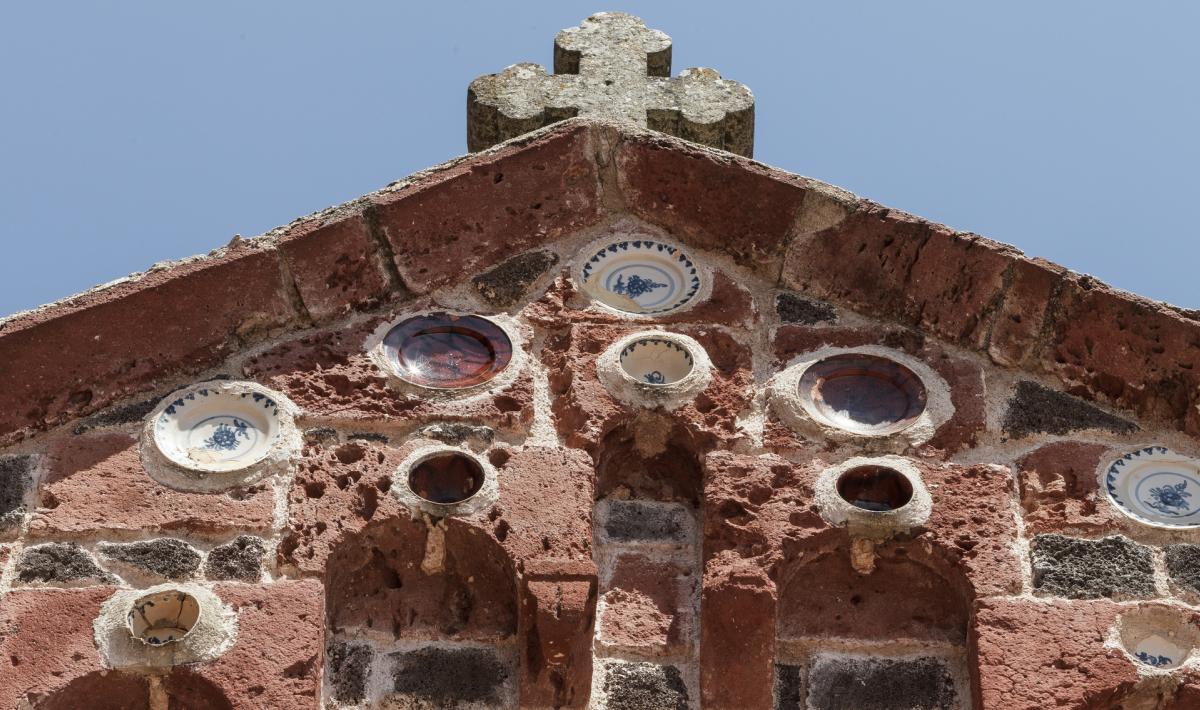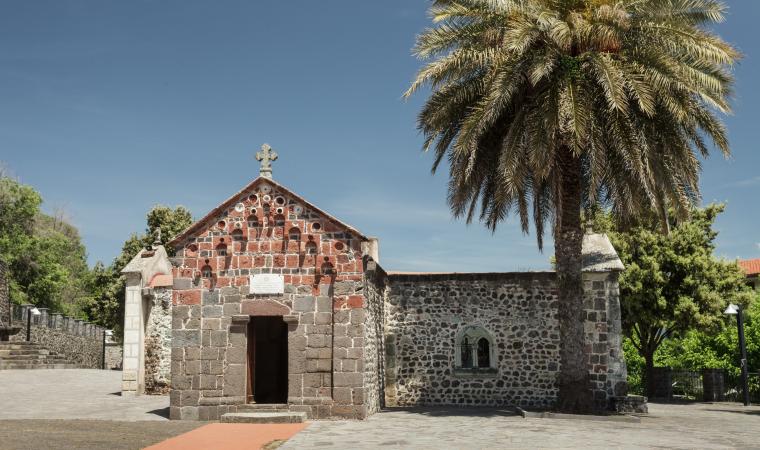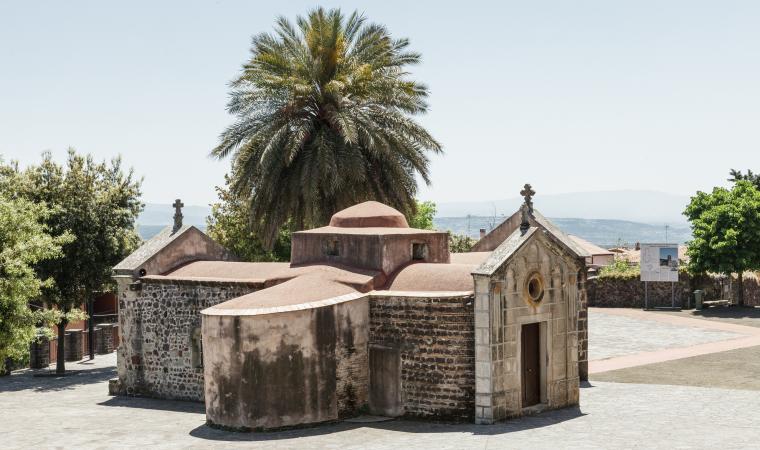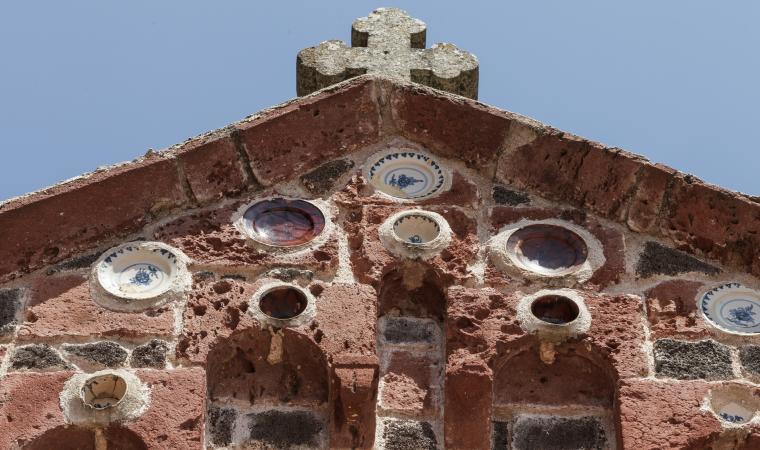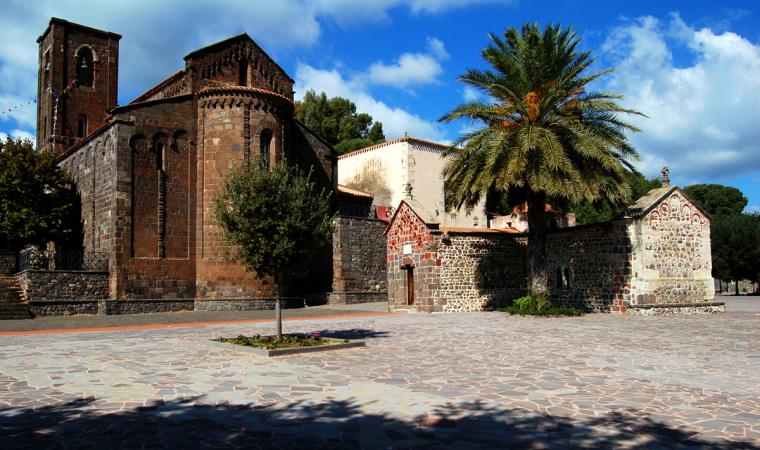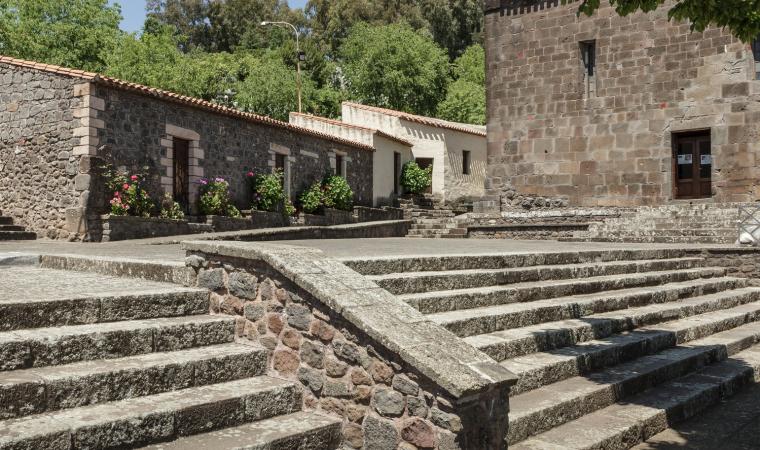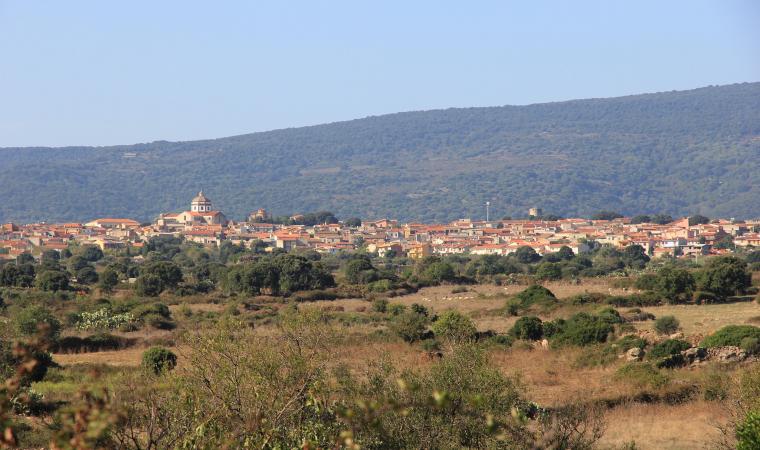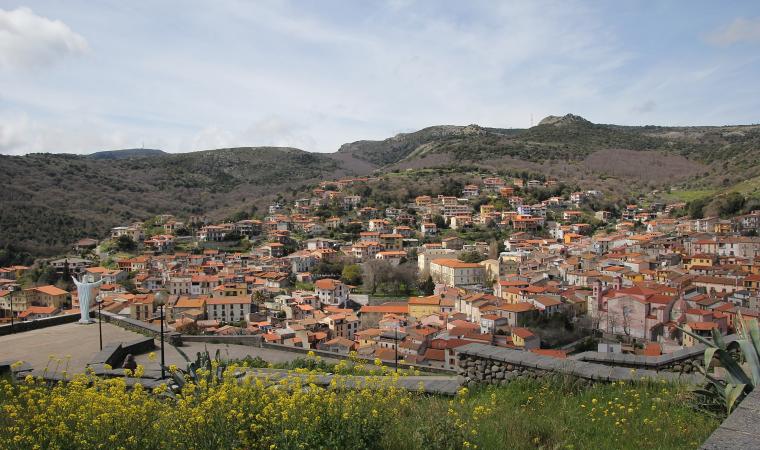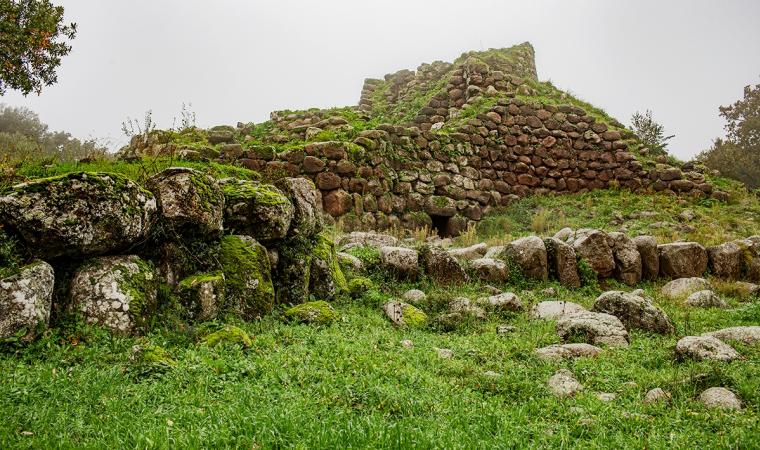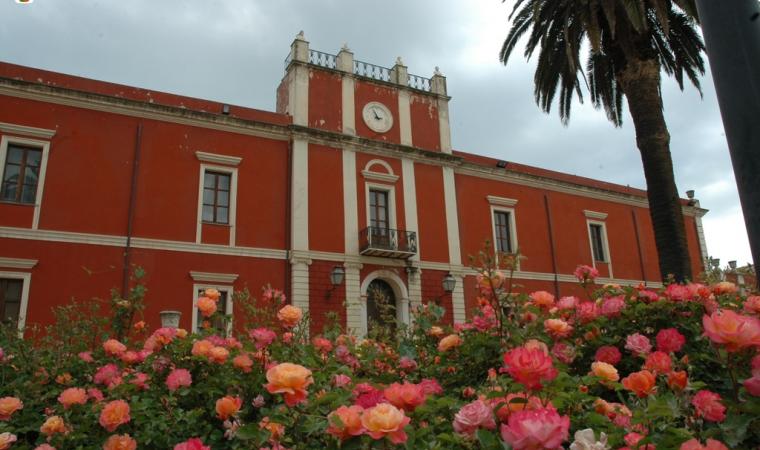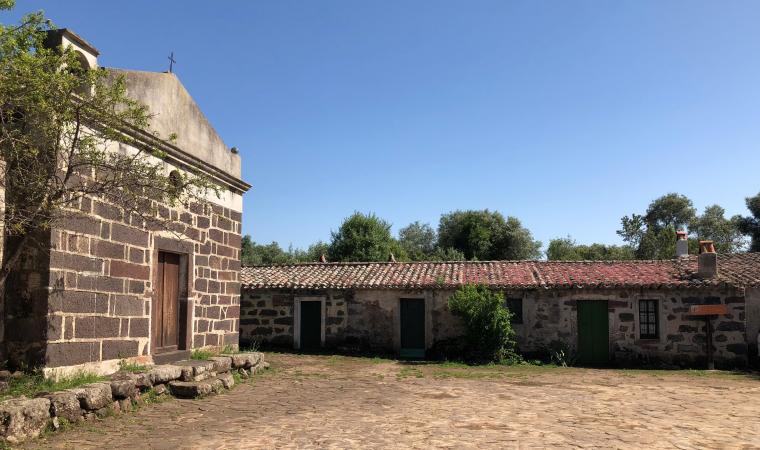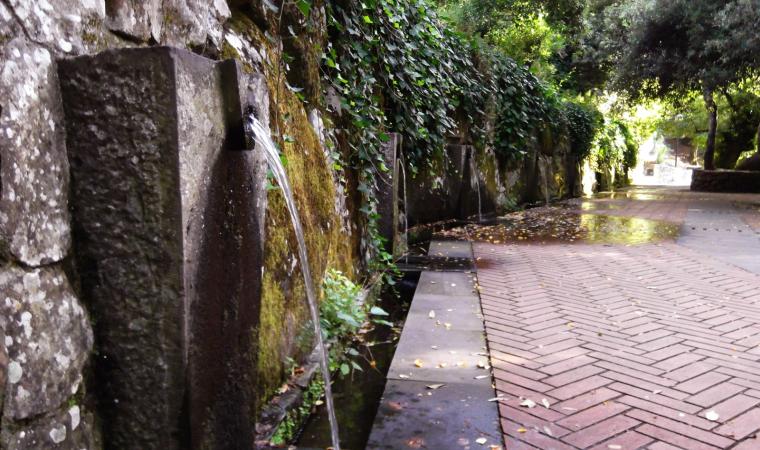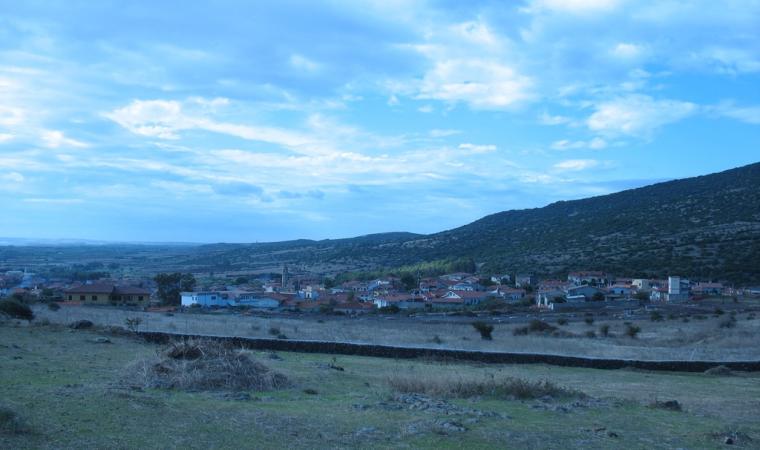The story of Our Lady of Bonacattu begins in the 5th century, when the Byzantine settlers began building a small quadrangular church (12 metres each side) from basalt and trachyte rock. Subsequent alterations (7th-8th century) were made when the first nucleus of the present-day Bonarcado may have already been established, a village at the foot of Montiferru, 25 km from Oristano. The site of the little sanctuary, which was undoubtedly one of the earliest Christian buildings on the Island, has its roots in even more distant events, dating back to a Nuragic settlement on top of which a Roman village with a thermal bath building was built, the remains of which were used to build the sanctuary. A bath with mosaic flooring in the eastern ‘wing’ bears witness to this.
There are legends linked to the name: apparently, the church was discovered in the wood by a hunter and, in fact, the Sardinian name Bonacattu, meaning ‘a good find’. It is more likely, however, that the name comes from a Byzantine dedication to the virgin Panachrantos (meaning immaculate). The name of the village itself, originally Bonacranto or Bonarcanto is a corruption of the Greek name. The present-day ‘version’ of the temple is the result of various interventions, with the addition of architectural elements, including two facades, one Romanesque to the west added between 1242 and 1268 and decorated with hanging arches and multi-coloured ceramic bowls, and one to the north, added in 1933, in neo-Romanesque style. Inside, you can admire the most ancient part: the four 'branches' of the Greek cross layout, which have barrel-vaults, with a Byzantine-inspired dome above the point where they cross each other. In the southern branch, there is the main altar on which there is a multi-coloured terracotta bas-relief of the Virgin Mary with child (15th century): the effigy led to the most ancient Marian cult on the Island, here in Bonarcado, and it attracts thousands of worshippers every year, mostly during the celebration of the Virgin Mary in September.
A second turning point took place at the beginning of the 12th century, when the judge Constantine of Arborea entrusted the village to the Camaldolese of Pisa. The monks founded an Abbey – of which the founding act is the first document (in Logudorese dialect) of the condaghe (ancient Sardinian administrative document) of Santa Maria di Bonarcado – and they built a monastery. In 1146 a nova clesia was added alongside it, right in front of the ancient sanctuary, forming today’s complex that looks out onto a paved square in the old town centre. The impressive basilica of Santa Maria emerged, made of dark basalt and reddish trachyte inserts that heighten its appeal. It originally had a single nave and crux commissa and was ‘transformed’, giving it three naves, with the addition of a square-shaped bell tower, in the mid-13th century. The works were performed by workers coming from Spain (the same ones that worked on the sanctuary). The introduction of Islamic decorative elements in Sardinia is their merit: small lobed arches, ‘accordion-style’ pilasters, stepped and inverted-pyramid type corbels. More expansion work took place in the 18th century. Currently, the main façade features three arches with a central portal, over which there is arch made of two-tone ashlars.

